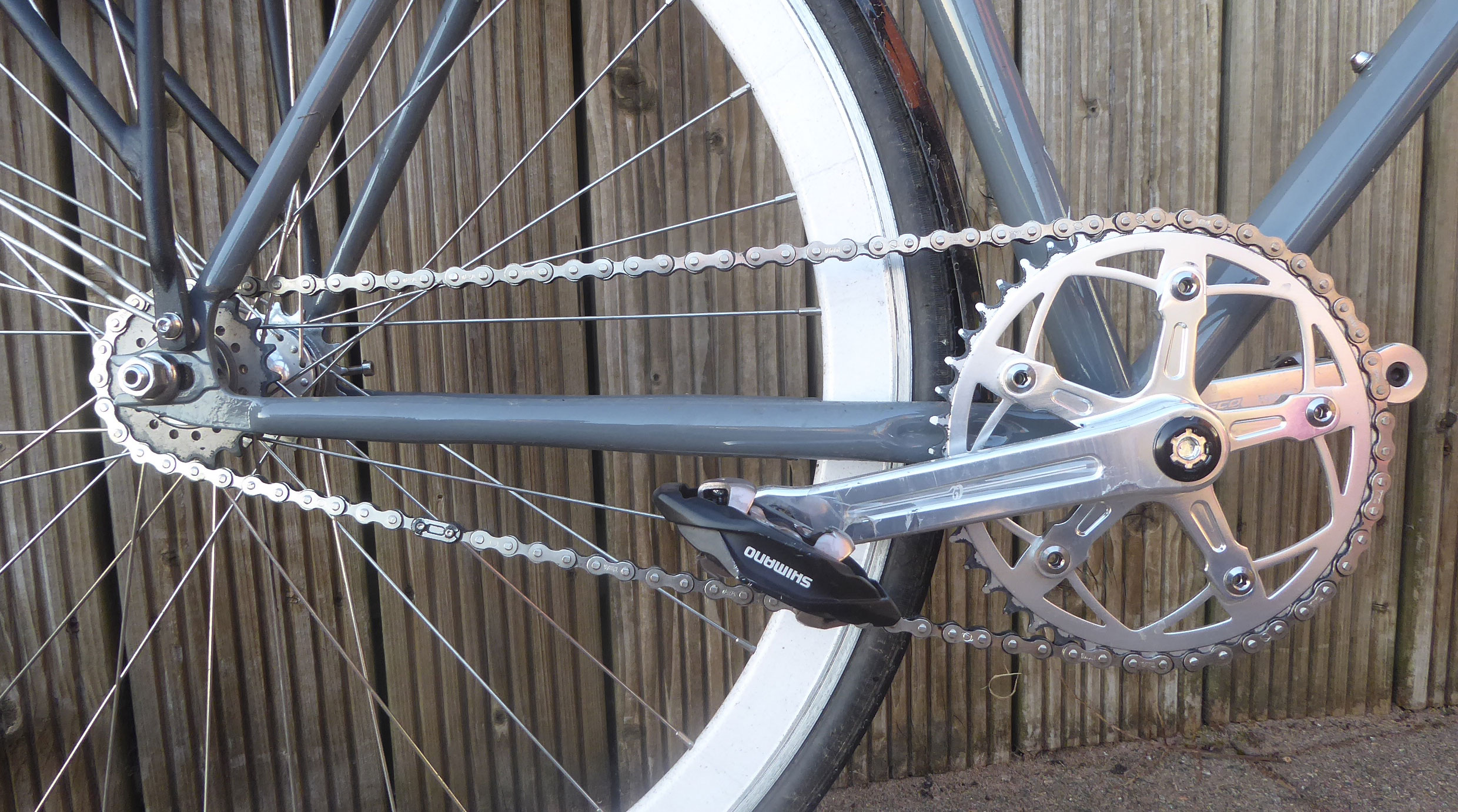
Some cycling activities may have been restricted this year, but there are still plenty of new things to try out. In the first of a new occasional series, this week we’re suggesting you might want to try a fixed wheel.
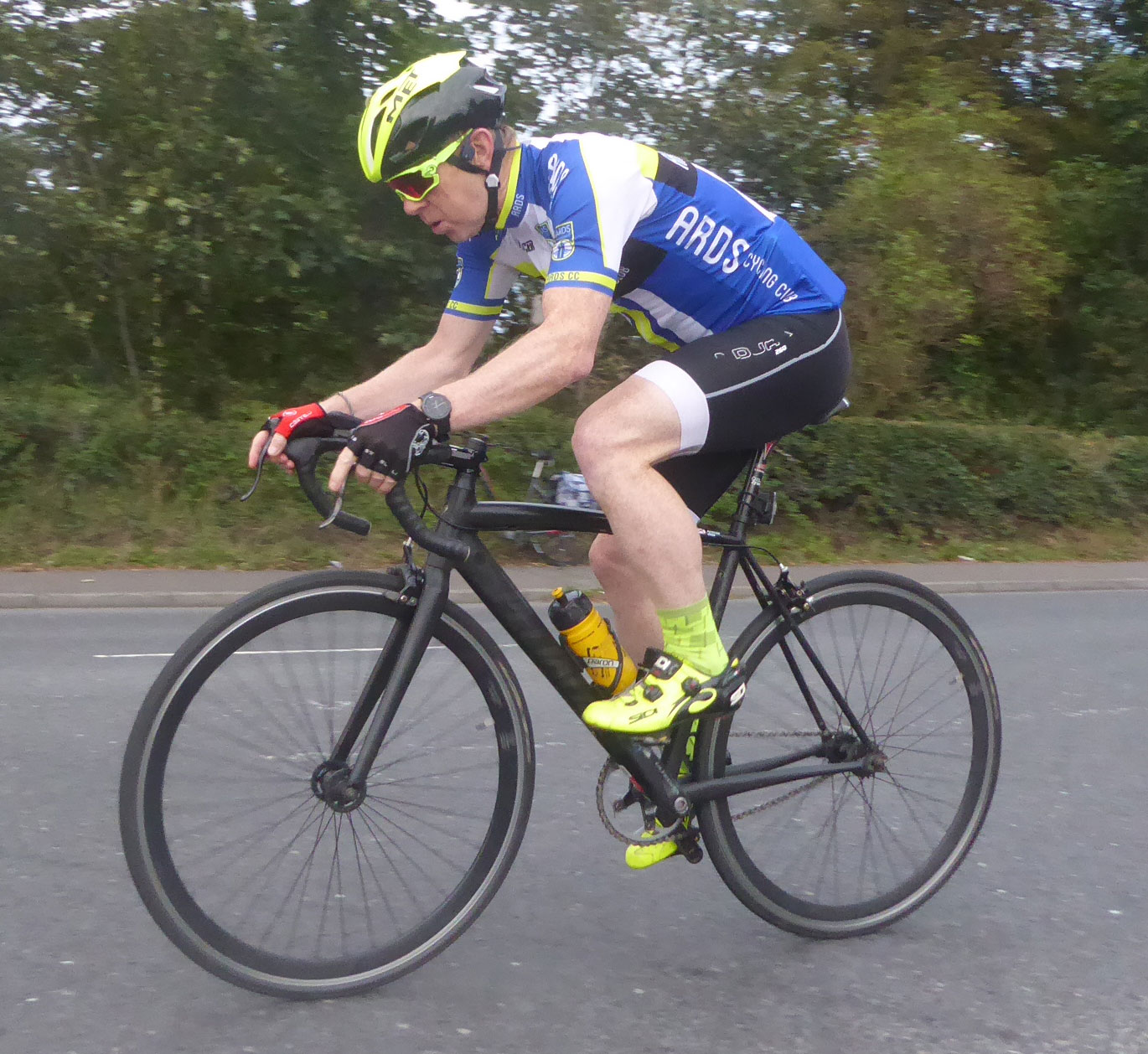
Andrew Jess rides a single speed on the Bradshaw’s Brae Hillclimb. Weight minimised. No gears to worry about. Just pedal and focus on the pain.
Initially the idea might seem strange. There are no gears. You can’t even freewheel – you have to pedal all the time. (And beware – if you stop pedalling suddenly, you are likely to be thrown up in the air). Why should you even consider such a torture machine? Aficionados typically give three reasons.
- A fixed wheel bike is very simple. You don’t need to worry about what gear you’re in, or whether to pedal or not. You just pedal all the time. This can be incredibly liberating. And because there is no ticking freewheel or grinding gears, a fixed wheel is virtually silent, leaving you free to enjoy the countryside or your inner thoughts in complete peace.
- A fixed wheel bike is very efficient. There is no excess equipment to lug around, no complicated shift mechanisms to adjust, and no bad chain lines to worry about. The rear end can also be narrower as there is no cassette. The bike doesn’t get much simpler or more efficient than this.
- A fixed wheel bike can improve your pedalling style. After a long season pushing big gears in time trials or MTB races, most riders will benefit from a period of faster, more fluent pedalling. Top coaches like Gerry Beggs have long advocated a small fixed gear (maybe 42*17) in the early winter – you’ll quickly develop an efficient pedalling technique if you want to keep up on the Sunday run. And it is no surprise that some of the smoothest pedalers in the peloton have come from a fast, fixed wheel, track racing background – think Geraint Thomas or Bradley Wiggins.
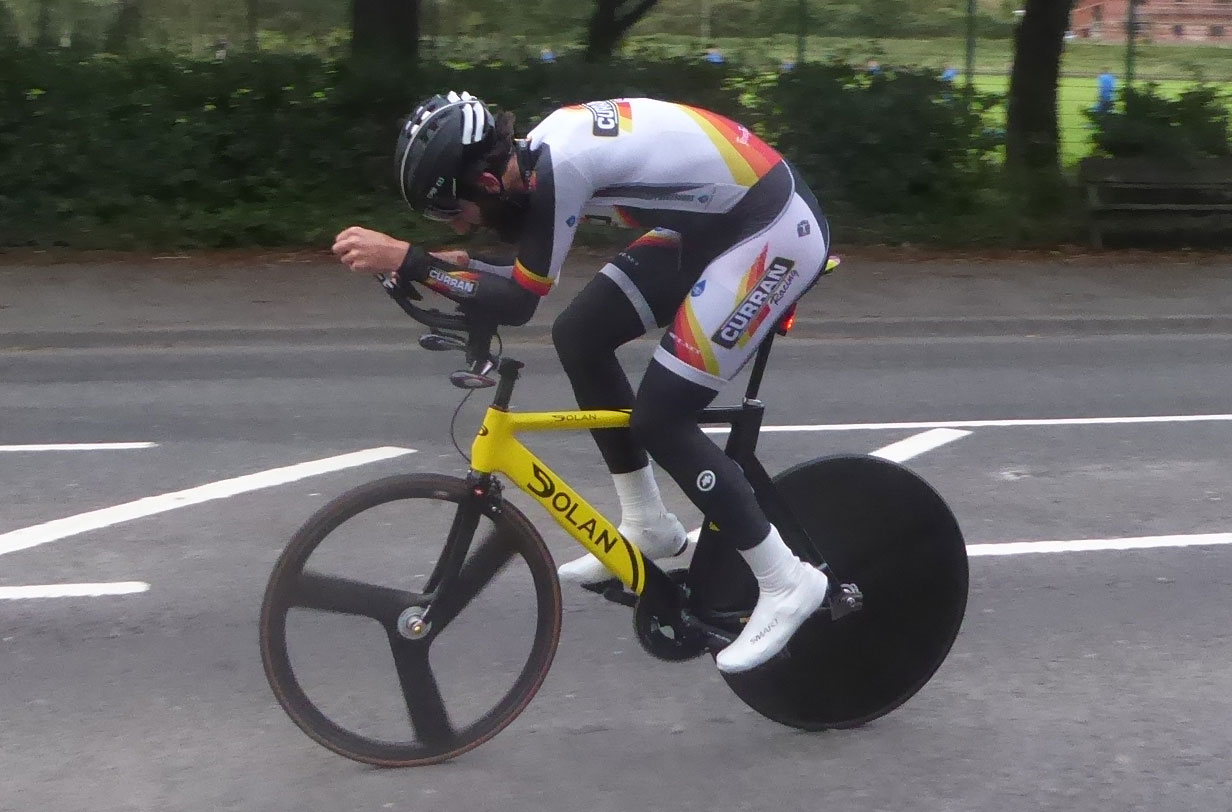
Ian Inglis rides a fixed wheel in a club time trial on the Portaferry Road. If you’re going to be in the same gear for the whole race, why not keep it simple?
If you are thinking of giving it a go, there are a couple of technical things to be aware of.
First – by law you only need one brake (because easing back on the pedals is considered the second brake). In practice, we’d advise two brakes for extra security.
Second, a gear of 65 inches (42*17) is a good place to start. That equates to 100 revs per minute at 20mph. A bigger gear might be OK on the flat, but you could struggle up the hills. And much smaller, and you might spin out on the longer downhills.
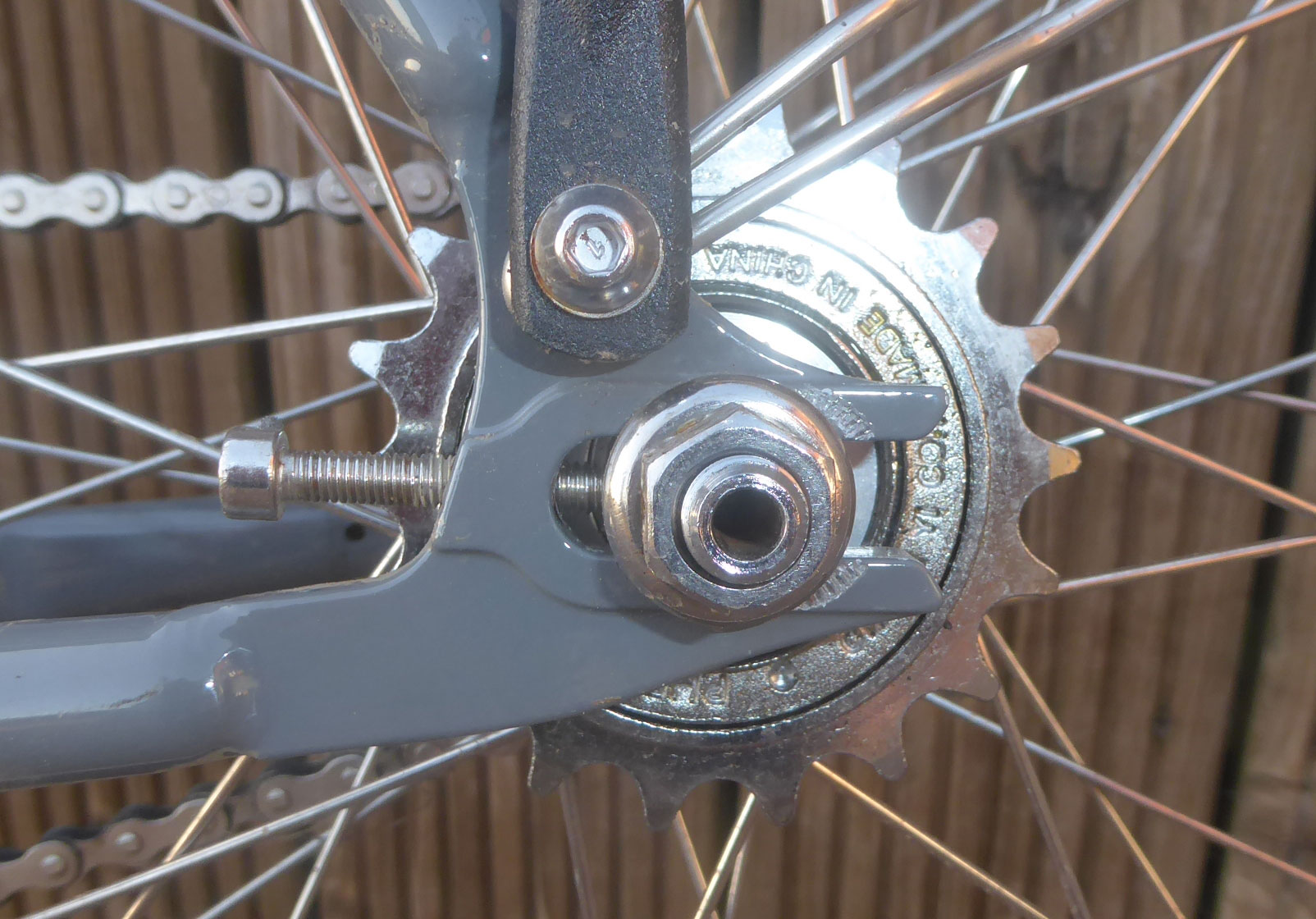
Rear facing “track end”. This one also has an adjuster to help locate the wheel accurately.
Third, most fixed wheel frames will come with “track ends”. This means that if the rear wheel does come loose, it is pulled safely into the frame, rather than getting pulled out of the frame. That’s a fairly small risk in our opinion (unless you’re very strong). Track ends also allow plenty of room to move the wheel forward and back to adjust the chain slack – you want a small amount of play but not much. Having said all this, track ends can be a pain if you’ve got a rear mudguard because the mudguard might stop the wheel moving far enough back to get out of the frame. In practice many riders just use an old road frame with forward facing “road ends”, and this works just as well in practice. Note – vertical road ends aren’t suitable because you can’t adjust the chain length.
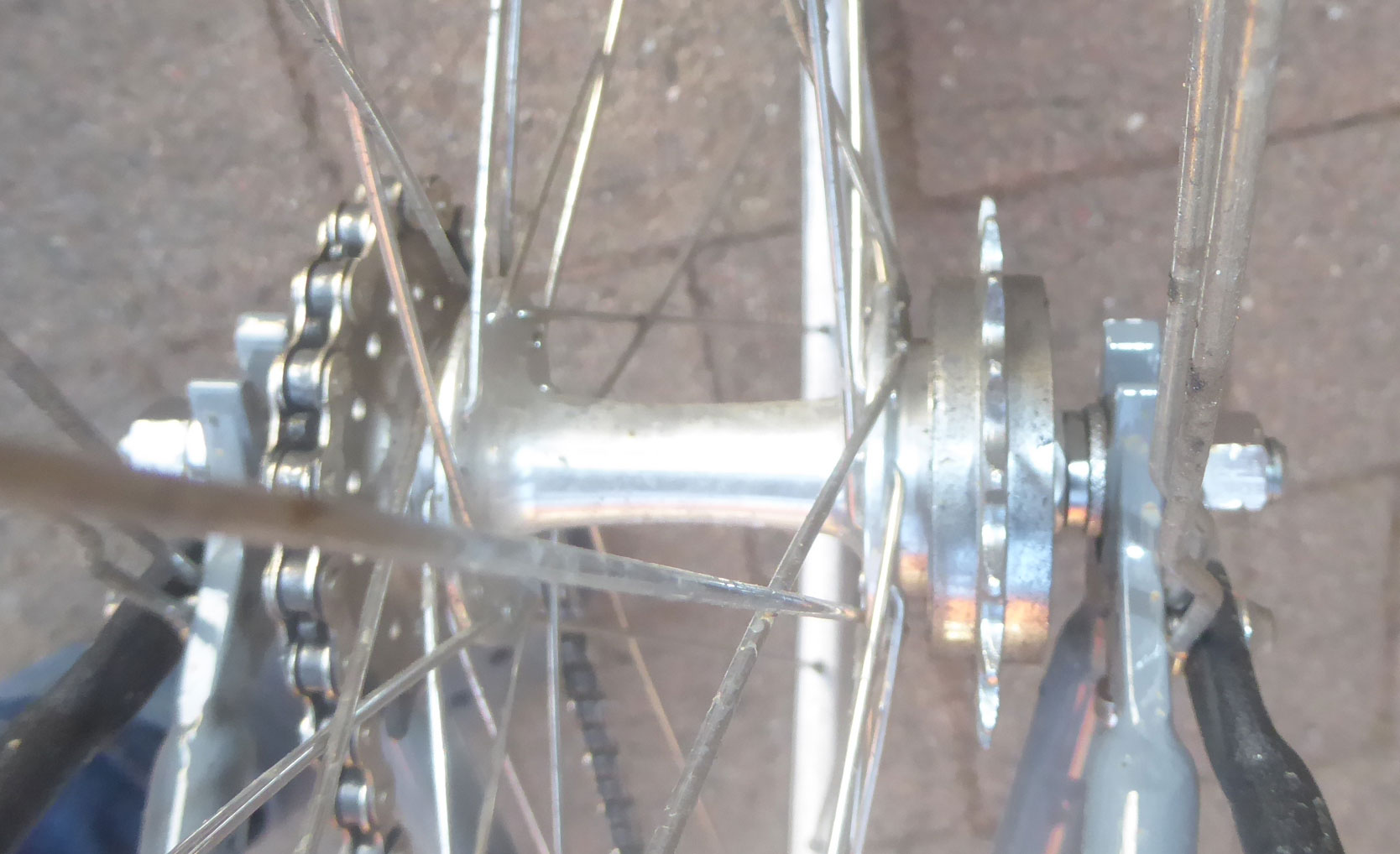
A double sided fixed hub – swap the back wheel round to change to the single speed free hub.
Fourth, a fixed hub is narrower than a normal road hub because there is only a single sprocket to fit in. But you can screw a fixed sprocket onto a old style road hub (that has threads for a screw on block, rather than splines for a more modern cassette). You’ll probably want to do this if you’re using a road frame because a proper fixed hub will be too narrow to fit in the frame. But beware – a proper fixed hub will also have a secondary reverse thread so that a lock ring can be fitted. This stops the fixed sprocket unscrewing if you forget to pedal! You can’t fit this extra safety device on a road hub. A fixed hub will also often be threaded on both sides, so you can fit two different sized sprockets, or a fixed on one side and a single speed free on the other, and then swap between them as desired.
And finally, a quick mention on chain width. Track bikes and purpose built fixed wheel bikes use a 1/8″ chain, which is typically stronger and more resistant to flex than the narrower 3/32″ chains used on bikes with gears. But you can get 3/32″ fixed sprockets, and this might be a cheaper option if you’re adapting an old road bike and want to use the existing chainrings and chain.
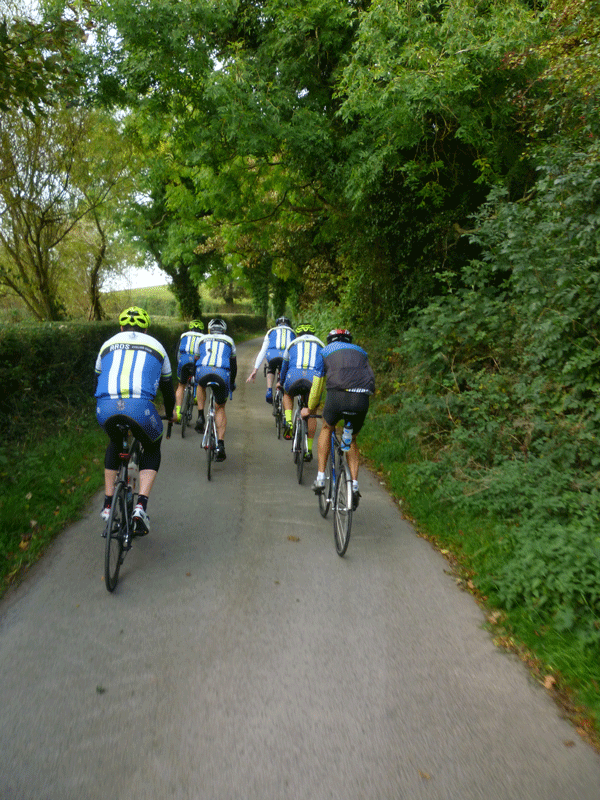
Check out Paul Robinson’s bike (back right). Yes – a fixed wheel :-)
That’s a brief introduction to the art of fixed wheels. County Down’s rolling hills – particularly gentler areas like the peninsula – are well suited to a fixed wheel. Why not give it a go this autumn?
